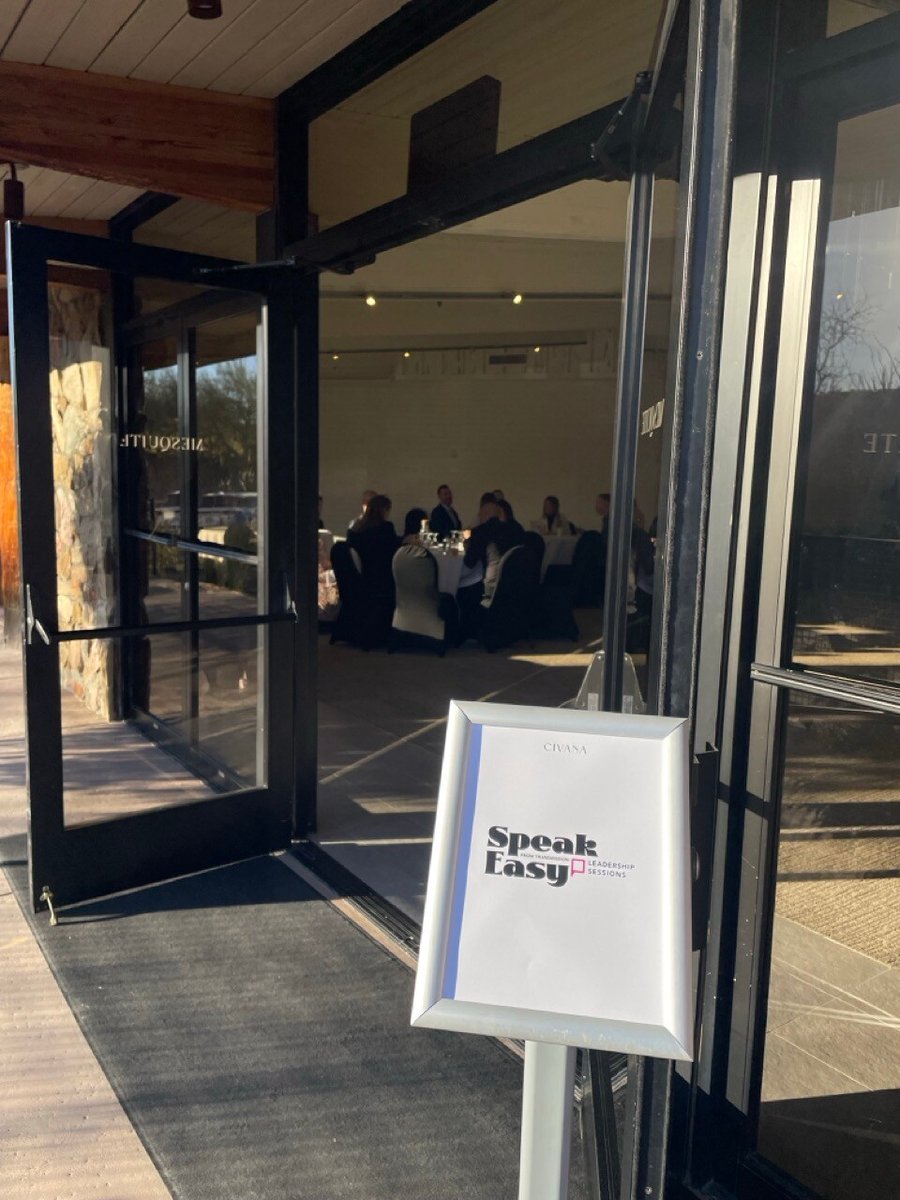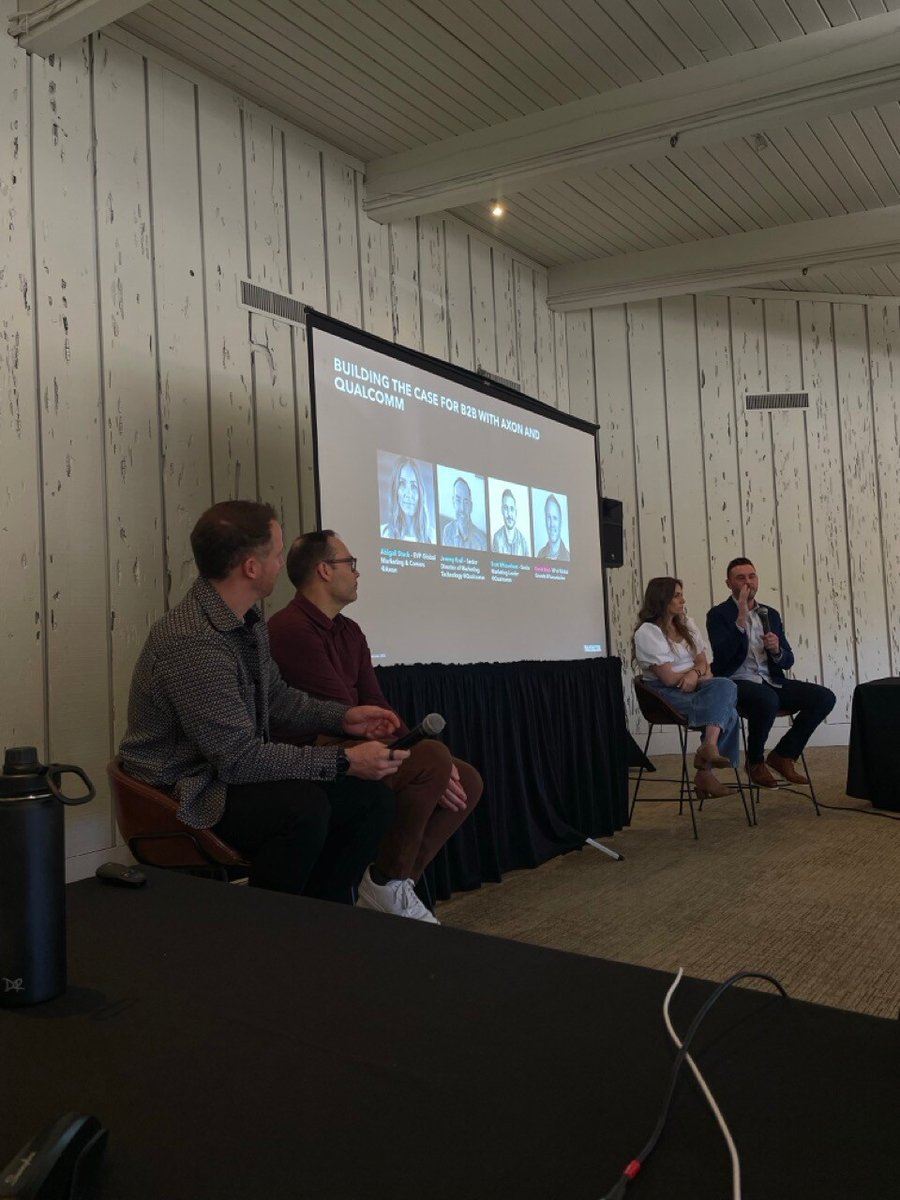
Brand storytelling is emerging as a powerful tool to connect with audiences on a deeper level. Our President, Americas, Ricky Abbott dives into how moving away from transactions to relationships based on shared values and interests can drive long-term growth for the future.
Taking risks: The biggest challenge in B2B marketing
The idea of taking risks can be daunting in an industry where quantifying results is paramount. But taking measured risks – and by risk, we mean trying something new to achieve a desired outcome – can deliver against highly desirable KPIs like growth, engagement, preference, and changes in perception.
We recently hosted our first SpeakEasy Leadership Sessions event in Phoenix where B2B marketing leaders gathered to discuss the role of brand storytelling, and how it’s shaping the future of B2B marketing.

There, we repeatedly heard about the importance of taking risks to compete more effectively. It doesn’t mean abandoning the need for measurable outcomes. Instead, it involves embracing the uncertainty, building trusted partnerships, and trusting the process.
Anything but business as usual
Right now, we're hit by over 5,000 traditional, interruptive advertising messages a day. But how many actually cut through? There’s no shortage of ads that try to do too much, and there’s no way our audiences pay enough attention to care. Brand storytelling takes a different approach to attention.
It doesn’t interrupt. It entices. Great stories build connections with audiences through shared interests, values, and experiences. By its very nature, brand storytelling requires a leap into the unknown: What stories matter most? Who will the subjects of our stories be? How can we hook into important salient topics?
The end result isn't always clear from the outset and sometimes, it remains elusive even halfway through the journey. But this is where the magic happens.
The brand storytelling blueprint
Before we dive in, let's set the stage with two stellar examples of brand storytelling: The Final Copy of Ilon Specht and The Last Barf Bag. These films showcase the power of storytelling in creating emotional connections and driving brand success. The Final Copy of Ilon Specht tells the story of the woman behind L'Oréal's iconic "Because I'm Worth It" campaign, while The Last Barf Bag pays tribute to the humble yet handy American invention that Dramamine has rendered almost obsolete.
By trusting the process and allowing the story to unfold organically, brands can create authentic connections with their audience that go beyond traditional marketing metrics. Just like Tom Cruise's character in Risky Business, sometimes you have to take a chance and see where the story leads you.
Being more human
Brand storytelling’s ability to create an emotional connection with audiences is one of the things that makes it so compelling. During the event, we discussed how stories resonate with people on a deeper level than mere facts and figures. It’s emotional connection that makes brand storytelling so effective in building long-lasting relationships with customers, after all.
For instance, we explored how personal decision drivers are now outweighing professional ones for B2B buyers. This shift highlights the importance of creating content that speaks to the human side of the audience. By tapping into emotions and shared values, brands can foster a sense of loyalty and trust that transcends transactional relationships.
Don't leave it isolated: Link it to your brand-to-demand programs
Another key insight from the Phoenix event was the importance of integrating brand storytelling into your overall brand-to-demand architecture. Brand storytelling should not be an isolated effort but rather a part of a cohesive strategy that tells consistent customer stories across all touchpoints.
Only 26% of B2B buyers feel that brands are 'active thought leaders'.
We discussed how brands like Google Earth have successfully leveraged character-driven narratives to drive business objectives like in the amazing story of Saroo from the film, Lion. By focusing on real-world impact and authentic stories, brands can create content that resonates with audiences and generates lasting value.
This integration ensures the stories being told are compellingly aligned with the brand's overall messaging and goals. Finding these unique ways in is really hard especially when you’re under constant pressure to show the ‘product’, lucky for you, we are experts here and can help.
Measuring success in brand storytelling
One of the common concerns in B2B marketing is how to measure the success of brand storytelling. While traditional metrics like sales and leads are still important, brand storytelling requires a broader perspective. During the event, we explored various ways to measure the impact of storytelling, such as brand affinity, engagement rates, and incremental pipeline lift.
A key tenet is linking brand storytelling into your entire brand-to-demand architecture, using account-based incrementality modeling to show its impact. These metrics give you a more comprehensive understanding of how your storytelling efforts influence audiences and drive business growth.
In the end, it's all about finding the right balance between creativity and data-driven insights to ensure that the stories being told are compelling and effective.
Spotlight on our Directors
We were fortunate to have three amazing directors with us at the Phoenix event:
Celia Aniskovich, a talented Director and Producer known for her work on Dial Tone Films.
Dana Nachman, Director and Owner of Sweet World Films, who has a knack for creating compelling narratives that resonate with audiences.
Kirstin Falk, a Senior Advisor for brand strategy and partnerships at Breakwater Studios, who brought a wealth of experience crafting impactful brand stories.





Their insights and expertise added tremendous value to our discussions, and their work serves as a testament to the power of storytelling in driving brand success.
Embracing the journey ahead
Brand storytelling is indeed 'risky business'; but it's a risk worth taking. The Phoenix event reinforced the idea that to stand out in the crowded B2B landscape, brands must be willing to take bold steps and embrace the uncertainty that comes with storytelling.
By doing so, they can create meaningful connections with their audience, build lasting relationships, and ultimately drive business success. As we move forward, let's continue to push the boundaries of B2B marketing and harness the power of brand storytelling to create a brighter, more engaging future for our brands.
Brand storytelling is a wild, new, and ‘risky’ but rewarding world. We aren’t just advising brands; we’re practicing what we preach, more to come on that soon. If you're even slightly intrigued, get in touch to see how Transmission can help!